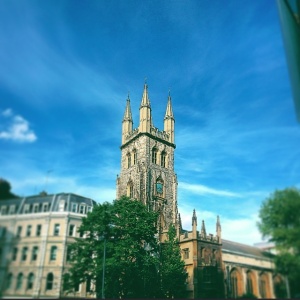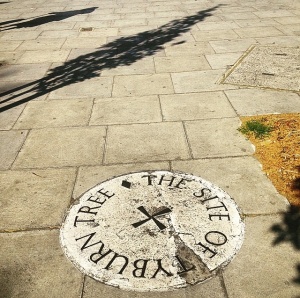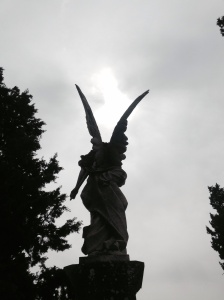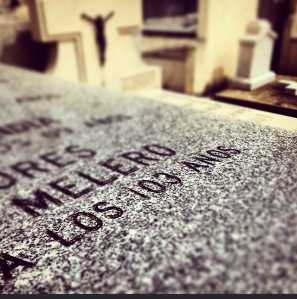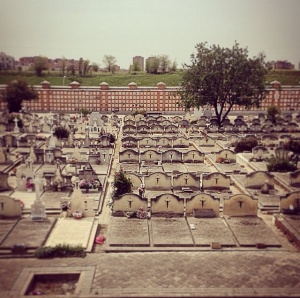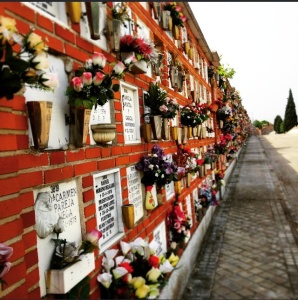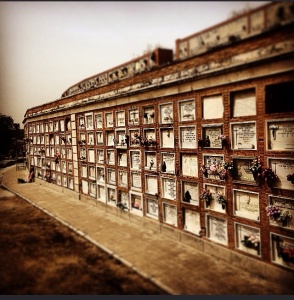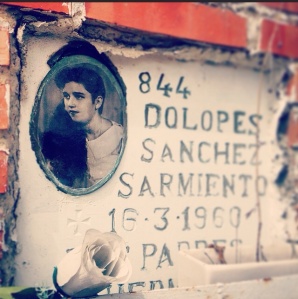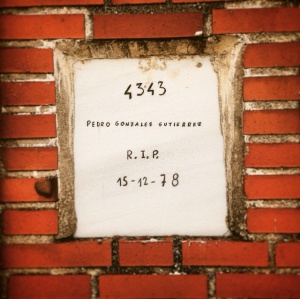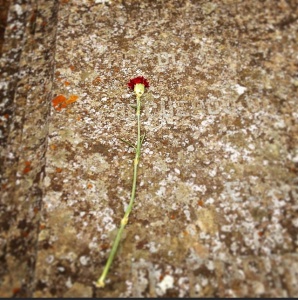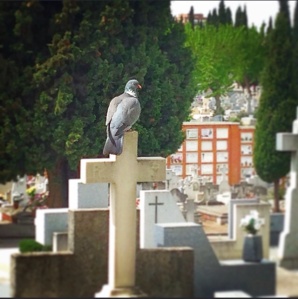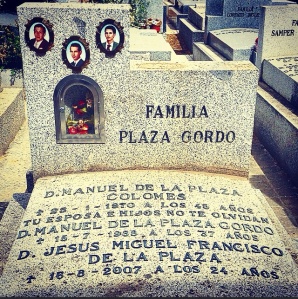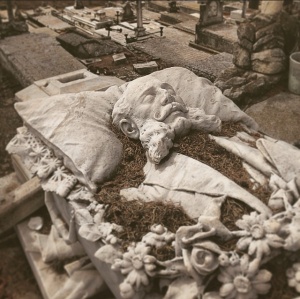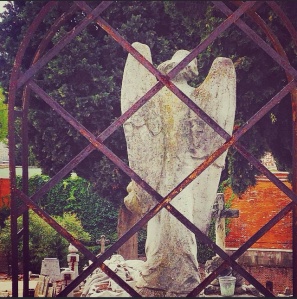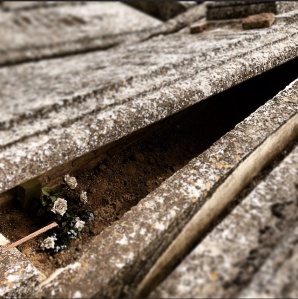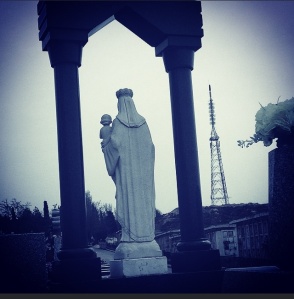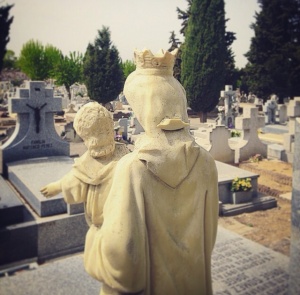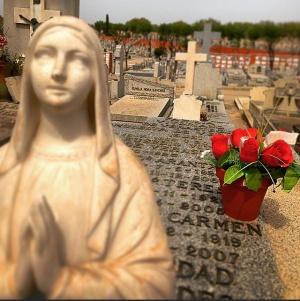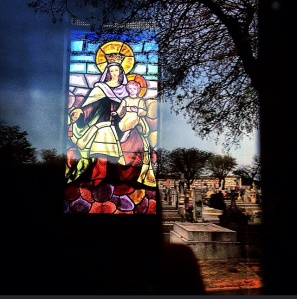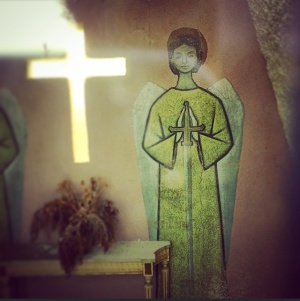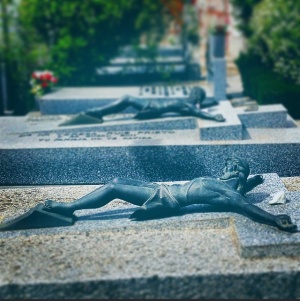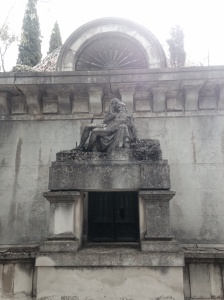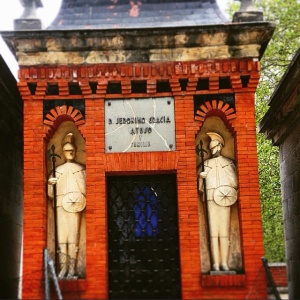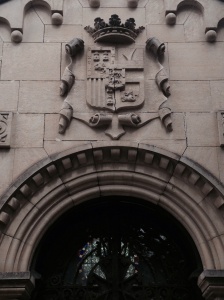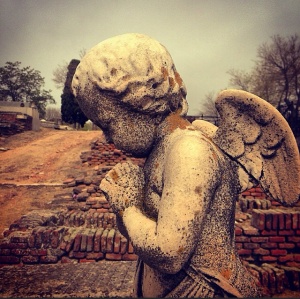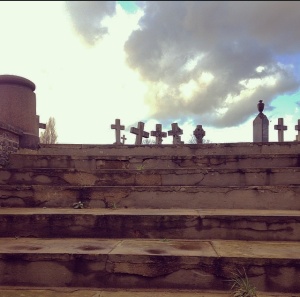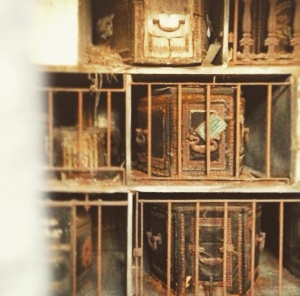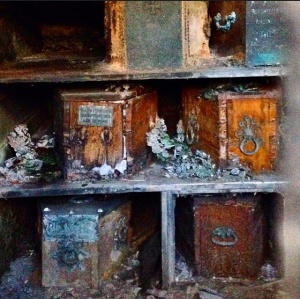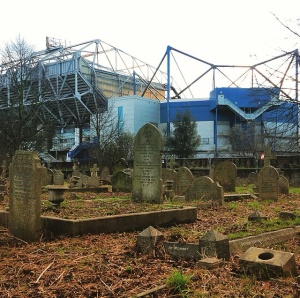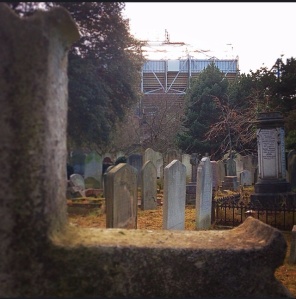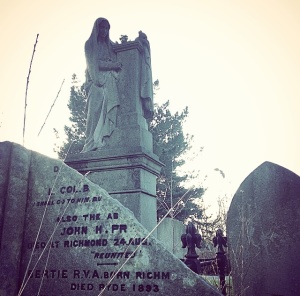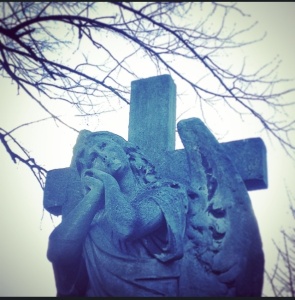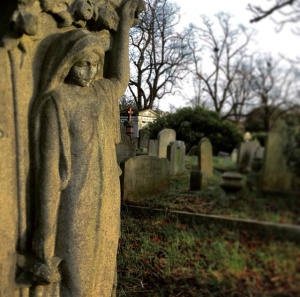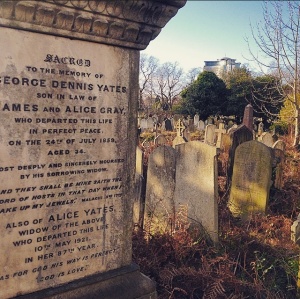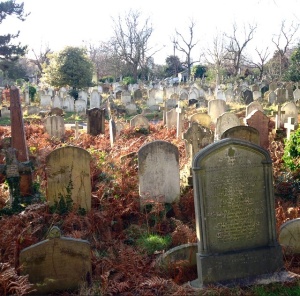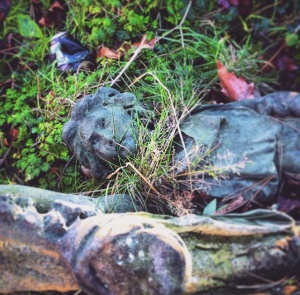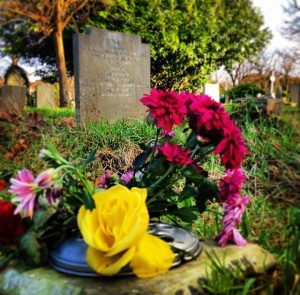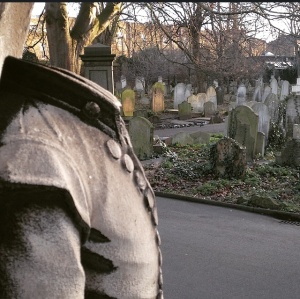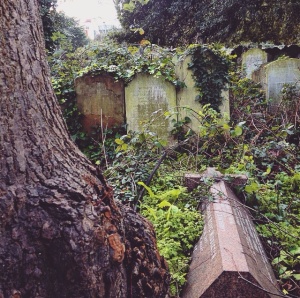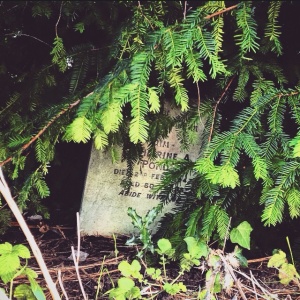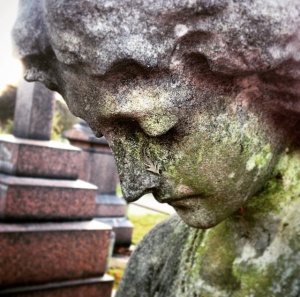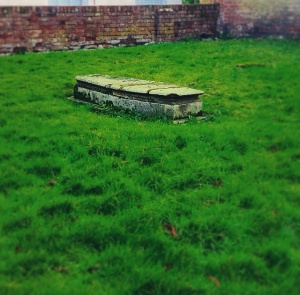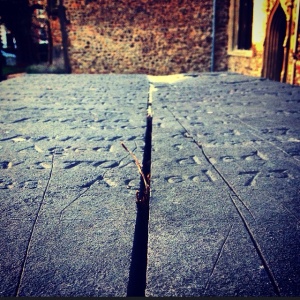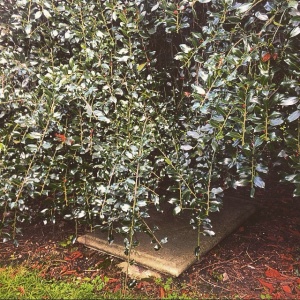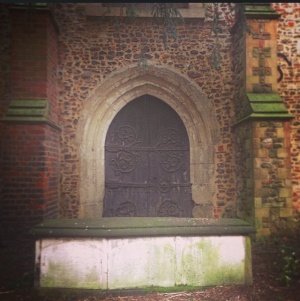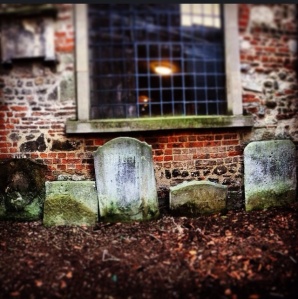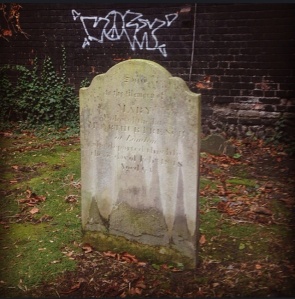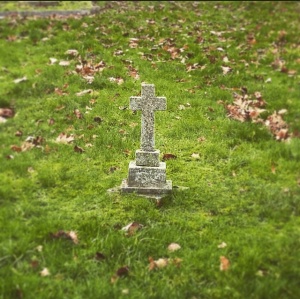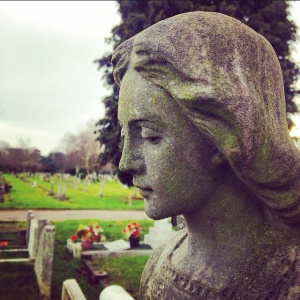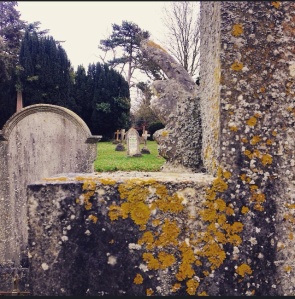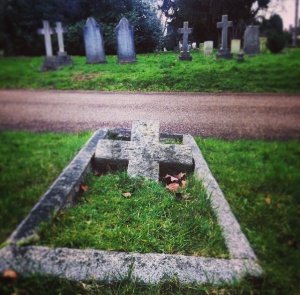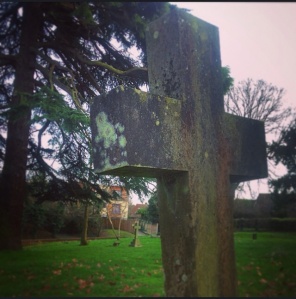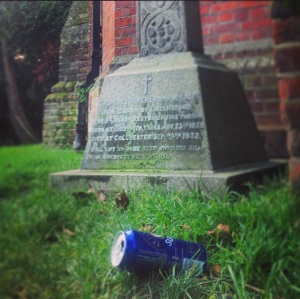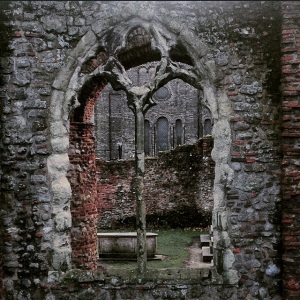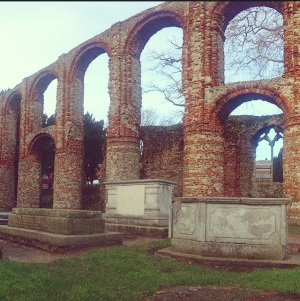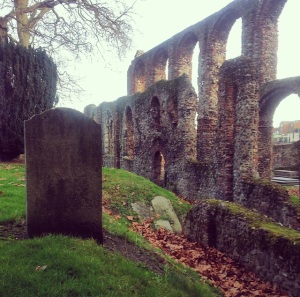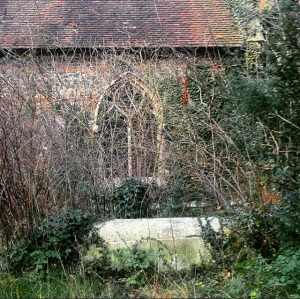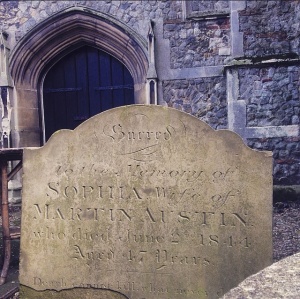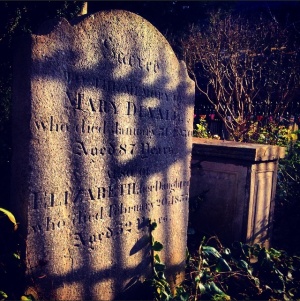Saint Sepulchre without Newgate is located just outside the old city walls of London. The church barely survived the great fire of 1666 before heavy renovation in the 19th century. A slab of wall from the Church of the Holy Sepulchre in Jerusalem hangs on a central pillar honouring the holy site of which the church takes its name. The Old Bailey is opposite, built on the site where the medieval Newgate gaol once stood. Such proximity to establishments of justice gives St Sepulchre a long history of crime and punishment. The church bell would toll to announce that an execution had taken place while the clerk of the parish would be tasked with ringing a hand bell outside the cell of a condemned prisoner. The bell now sits proudly in a glass display cabinet in the church’s nave having been silenced of its tormenting ring of impending death. During the reign of Mary I the church vicar was convicted of heresy and burnt alive at the stake. For centuries the church tower which reaches to the heavens would have been the final sight of earthly holiness for those dragged to their doom convinced that their crimes condemned them to hell. Executed prisoners were often buried in the churchyard without memorial which has since been paved over as a garden of remembrance to the Royal Fusiliers. City workers in suits sit in the garden enjoying their lunchtime sandwiches oblivious to the convicted bones hidden deep below their feet.
Thomas Culpepper was born the second of three sons in Kent in 1514. He grew up to be handsome and much desired courtier of King Henry VIII securing himself as one of the king’s favourites after a successful career obtaining precious and rare items for the royal family. He had also amassed a long line of female admirers. Catherine Howard was a young maiden to Henry’s fated fourth wife Ann of Cleeves. The marriage was a disaster which ended in humiliation and a hasty annulment. Catherine was beautiful, flirtatious and no stranger to romantic controversy. In her youth she had caused a scuffle between her music tutor and a gentleman servitor. They had both fallen for her and it ended in a prophetic scene of jealously, anger and violence. She was also a distant cousin of Thomas Culpepper however this did not prevent an intense attraction emerging between the two. Gossip spread around court culminating in rumours of marriage. However it all fizzled out as Catherine had a much more prestigious partner in her focus: King Henry himself. Even for Henry VIII Catherine Howard was quite a catch. By 1540 the king was an old and overweight fraction of the physical specimen he had once been. His doomed marriage to Ann of Cleeves had been a crushing disappointment and Catherine at thirty years his junior provided the perfect lustful antidote. They married and Catherine became his queen.
The summer of 1540 was hot and dry. Cattle died of thirst. Peasants died of plague. But for the infatuated Henry and his new queen life couldn’t be better as the conditions were perfect for a prolonged hunting season. A French ambassador noted that the king “is so amorous of her that he cannot treat her well enough and caresses her more than he did the others”. He couldn’t keep his hands off of her. Life was good for Henry but during a progress north in 1541 curious goings on began to occur. Locks had been fiddled with. Lights and movement had been spotted from the Queens’ apartments in the middle of the night. Stairway doors had been left ajar. Bedroom doors were bolted. There had been comings and goings in the middle of the night while the King slept in his chamber. It was all a bit suspicious. On top of this a ghost of Catherine’s past reared his unwelcome head. Francis Dereham, the gentleman servitor from Catherine’s youth, appeared at court and begun causing scenes with his uncouth behaviour of hanging around a bit too long after meals in the Queen’s presence. When reprimanded for such improper behaviour he lashed out claiming that he’d known the queen long before anybody else. This raised some eyebrows. In what way had he known her?
While attending All Souls’ Day mass Henry found a damning letter on his seat. It contained sensational allegations against his Queen. While investigations into her past ensued Catherine would have been equally concerned about what she had been up to in the present. Under intense examination Dareham blabbed. He had “carnal knowledge” of the queen from the days before she had arrived at the royal court. A furious Henry had the pair imprisoned. The problem for Henry was that the affair had happened before his marriage to Catherine therefore It couldn’t be considered treason. He needed proof of a relationship taking place after the royal wedding. To gather more evidence he had Darehan brutally persecuted which lead to an even deeper secret emerging. Once again Dareham said too much although in his defence this time it was under the excruciating pain of torture. There HAD been an affair after the marriage but not with him, it was with Catherine’s old flame Thomas Culpepper. He had been the sneaking lover making things go bump in the night. The true extent of Catherine and Culpepper’s forbidden romance was never fully revealed. She proclaimed that it didn’t extend further than the exchange of lover’s tokens and amorous letters. Regardless the king had been deceived which was enough to warrant treason. They all had to be punished.
Thomas Culpepper would have heard the clang of the execution bell outside his cell at Newgate on the 10th December 1541. He would have been paraded on a hurdle along Oxford Street towards Tyburn (where Marble Arch stands today) while a baying crowd gathered with raucous excitement. They were here to see the execution of traitors. Dareham joined him. His crime had been nothing more sinister than to sleep with a young woman who at the time wasn’t married yet he suffered the worst punishment physically possible. he was hung by a noose then cut down just before reaching the point of strangulation. From here, with a cheer of vengeful glee from the crowd, he was castrated. At this point, while still conscious, he was disembowelled, his torso and stomach sliced open and his organs torn away. Only after this grotesque display of agony was he finally beheaded.
Hung.
Drawn.
Quartered.
Dareham’s execution was an act of such terrifying gore and violence that Culpepper had pleaded for mercy from the king. His plea was granted and he avoided subjection to the full works. A simple beheading preferable next to Dareham’s gruesome death. It almost seems like an act of benevolent mercy in comparison. The bodies were hung from Tyburn tree for the crowd to gawp at before their dismembered heads were removed for a stint on a spike at London Bridge. Finally Thomas Culpepper was buried in the churchyard at St Sepulchre without Newgate. Catherine’s execution followed soon after. This Tudor love triangle ended in a bloody death for all involved at the hands of the king who had been betrayed.
So if you ever grab a bite to eat in the city of London and decide to munch away in the churchyard spare a thought for Thomas Culpepper and his deadly run in with king Henry VIII. Then think of all the other deceased criminals resting underneath that garden. Because every forgotten skull in the earth beside that church has its own story of how it ended up there.
Esteban.
Historical information for this story was gathered from David Starkey’s Six Wives:The Queens of Henry VIII, a fantastic book of stunning biographical depth and analysis of all of Henry’s wives.

